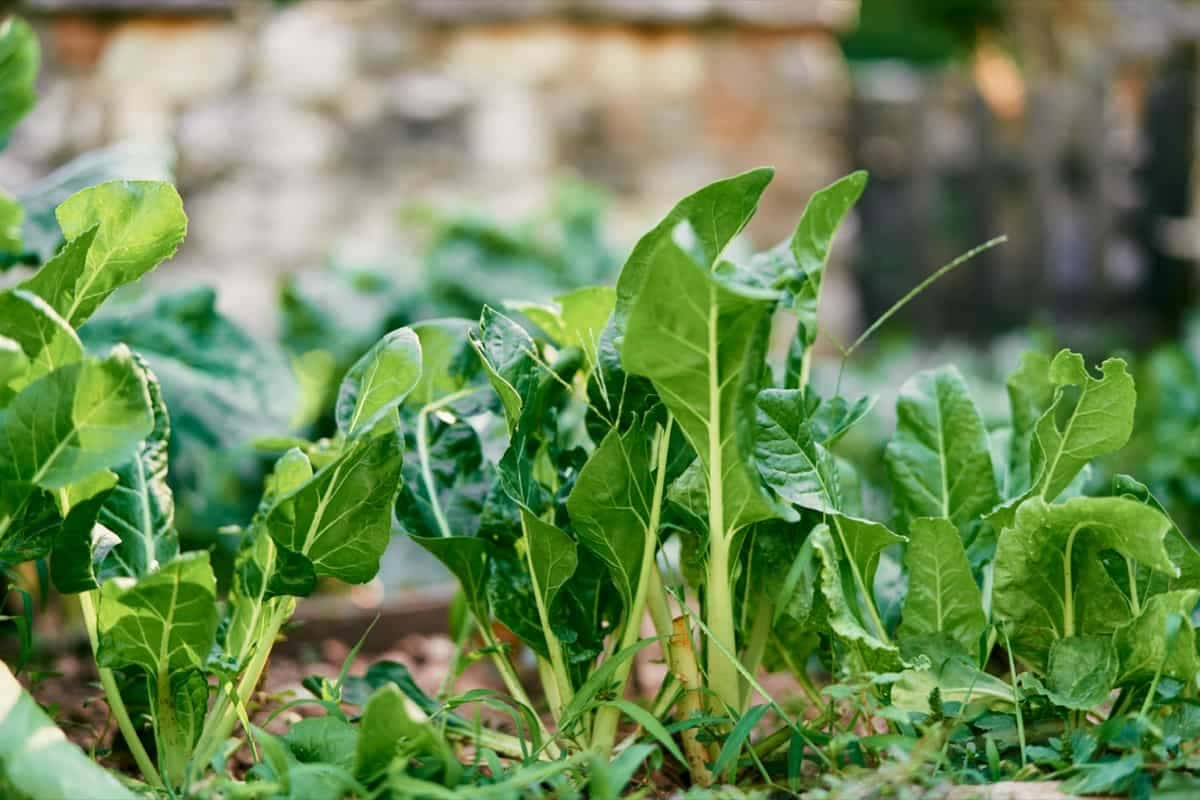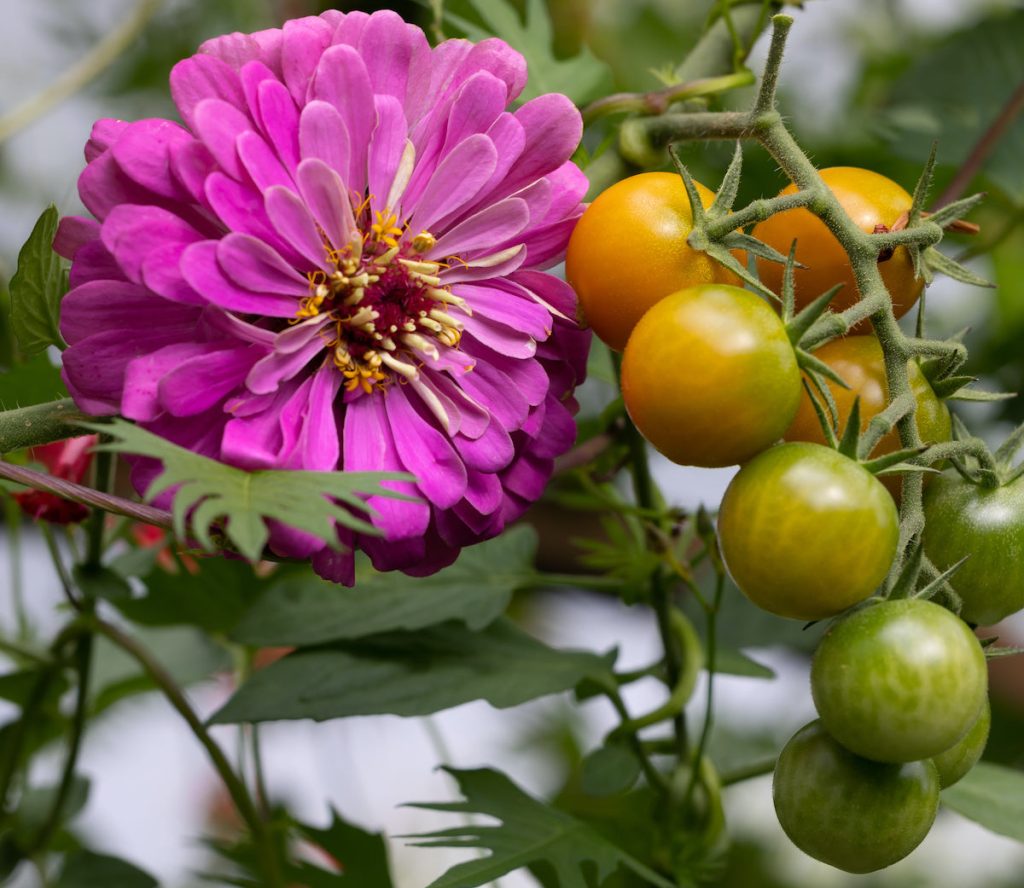Swiss chard, also known as silverbeet or simply chard, is a leafy green vegetable that is packed with nutrients and has a delicious, slightly bitter taste. It is a popular choice among home gardeners due to its ability to grow in various climates and its resistance to pests and diseases. However, like most plants, swiss chard can greatly benefit from companion planting. In this article, we will explore the world of swiss chard companion plants, how to choose the perfect companions for your garden, and some tips and alternatives to consider.
Who are Swiss Chard Companion Plants?

Companion planting is a gardening technique that involves planting different species of plants next to each other for mutual benefits. Some plants have natural abilities to enhance the growth of others, while others can repel pests and attract beneficial insects. Swiss chard, being a nutrient-hungry plant, can greatly benefit from having companion plants that provide it with the necessary nutrients, protect it from pests, and improve its overall health.
Nitrogen-Fixing Plants
Nitrogen is an essential nutrient for plants, and many vegetables, including swiss chard, require high levels of nitrogen to grow. This is where nitrogen-fixing plants come into play. These plants have the ability to capture nitrogen from the air and convert it into a form that is usable by other plants. Some great nitrogen-fixing plants to grow alongside swiss chard include legumes such as peas, beans, and clover.
Pest-Repelling Plants
Like all plants, swiss chard is susceptible to pests and diseases. To combat this, you can plant pest-repelling plants next to swiss chard to ward off common pests. For example, marigolds, nasturtiums, and onions have natural abilities to repel pests such as aphids, beetles, and nematodes. These plants also attract beneficial insects such as ladybugs and lacewings, which can prey on pests that may attack your swiss chard.
How to Choose the Perfect Swiss Chard Companion Plants

When choosing companion plants for your swiss chard, there are a few things to keep in mind. Firstly, consider the nutrient requirements of swiss chard and choose plants that can provide it with the necessary nutrients. Secondly, think about the size and growth habit of both plants. You want to avoid planting tall or invasive plants that may overshadow or compete with your swiss chard. Lastly, consider compatibility in terms of water and sunlight needs. Here are some tips to help you choose the perfect swiss chard companion plants:
Choose Plants with Similar Nutrient Requirements
As mentioned earlier, swiss chard is a nutrient-hungry plant that requires high levels of nitrogen to grow. Therefore, it is important to choose companion plants that can provide it with this essential nutrient. Some good options include legumes, leafy greens like spinach and lettuce, and herbs such as basil and chives. These plants will not only provide nitrogen but also add diversity to your garden and improve soil health.
Consider Plant Size and Growth Habit
It is important to choose companion plants that have a similar size and growth habit to swiss chard. This will prevent overcrowding and competition for resources. For example, tall plants like corn or sunflowers may overshadow swiss chard and inhibit its growth. Instead, opt for smaller plants like herbs, flowers, and leafy greens that will complement swiss chard without competing for space.
Pay Attention to Water and Sunlight Needs
Another factor to consider when choosing swiss chard companion plants is their water and sunlight needs. Swiss chard thrives in full sun and requires consistent moisture, so it is best to choose plants that have similar growing conditions. For example, planting water-loving plants like celery or watercress next to swiss chard may create an ideal environment for both plants to thrive.
Pros and Cons of Swiss Chard Companion Plants

Like any gardening technique, companion planting has its pros and cons. Here are some advantages and disadvantages of using companion plants for your swiss chard:
Pros:
- Increased nutrient availability: Companion plants can provide swiss chard with the necessary nutrients, leading to healthier and more productive plants.
- Pest control: Certain companion plants can repel pests and attract beneficial insects, reducing the need for pesticides.
- Improved soil health: By planting a variety of plants, you can improve soil structure and increase biodiversity in your garden.
- Better use of space: Companion plants can help maximize space in your garden by filling in gaps and creating a more diverse and productive ecosystem.
Cons:
- Competition for resources: If not chosen carefully, companion plants may compete with swiss chard for resources such as water, sunlight, and nutrients.
- Potential allelopathic effects: Some companion plants, especially herbs, may release chemicals that could inhibit the growth of other plants. This is known as allelopathy and can be harmful to swiss chard if not properly managed.
- May attract unwanted pests: While some companion plants are beneficial for pest control, others may attract pests that can harm both the companion plant and swiss chard.
Alternatives to Consider
While there are many great companion plants for swiss chard, it is important to keep in mind that every garden is unique, and what works for one gardener may not work for another. Therefore, it is always a good idea to experiment and find what works best for your specific garden. Here are some alternatives to consider if you are not satisfied with the results of your swiss chard companion plants:
- Crop rotation: Instead of planting companion plants, you can rotate swiss chard with other crops in your garden. This helps prevent soil depletion and reduces pest and disease problems.
- Interplanting: Rather than growing companion plants in separate beds, you can interplant them among your swiss chard. This creates a diverse and productive ecosystem that mimics nature.
- Cover crops: You can plant cover crops such as clover, buckwheat, or vetch to improve soil health and provide nutrients for swiss chard once tilled into the soil.
Step by Step Guide to Companion Planting with Swiss Chard

Now that you know the benefits and considerations of companion planting for swiss chard, here is a simple step by step guide to help you get started:
- Choose the right location: Swiss chard prefers full sun and consistent moisture, so choose a spot in your garden that receives at least 6 hours of sunlight per day and has well-drained soil.
- Prepare the soil: Before planting, prepare the soil by adding compost or aged manure to improve soil structure and fertility.
- Choose companion plants: Select companion plants that have similar nutrient requirements, size, and growth habit to swiss chard. Some good options include legumes, leafy greens, herbs, and flowers.
- Plan your garden layout: Draw a simple sketch of your garden bed and decide where each plant will go. Consider spacing requirements and avoid overcrowding.
- Plant companion plants: Plant your chosen companion plants around your swiss chard, leaving enough space for them to grow and mature.
- Mulch and water: Add a layer of mulch around plants to retain moisture and suppress weeds. Water regularly to keep the soil consistently moist.
- Monitor and maintain: Keep an eye on your garden and make adjustments as needed. Remove any pests or diseased plants to prevent them from spreading to your swiss chard.
Tips for Successful Swiss Chard Companion Planting
- Research companion plants: Before choosing companion plants, do some research to ensure they are compatible with swiss chard and have the desired effects.
- Keep a journal: Keep track of your garden’s progress by writing down which plants work well together and which ones do not. This will help you plan future gardens.
- Rotate crops: To avoid depleting soil nutrients, rotate swiss chard and its companion plants every season.
- Use natural pest control methods: If pests become a problem, try using natural methods such as handpicking, homemade sprays, or beneficial insects.
- Experiment: Don’t be afraid to try new companion plant combinations in your garden. You never know what may work best for your specific growing conditions.
FAQs about Swiss Chard Companion Plants
What are the best companion plants for swiss chard?
Some great companion plants for swiss chard include legumes, leafy greens, herbs, and flowers. These plants provide necessary nutrients, repel pests, and attract beneficial insects.
Can I plant vegetables next to swiss chard?
Yes, you can plant vegetables next to swiss chard as long as they have similar nutrient requirements and do not compete with each other for resources.
How many companion plants should I plant with swiss chard?
The number of companion plants will depend on the size of your garden and the spacing requirements of each plant. It is important to give each plant enough space to grow and mature without overcrowding.
Can I plant swiss chard with tomatoes?
Tomatoes are not considered good companion plants for swiss chard as they have different water and nutrient needs and may compete for resources. However, some gardeners have had success planting them together, so it is worth experimenting in your own garden.
How long does swiss chard take to grow?
Swiss chard can take anywhere from 50 to 60 days to mature, depending on the variety and growing conditions. It is best to harvest leaves when they reach about 6 inches in length.
Conclusion
In conclusion, swiss chard companion plants can greatly benefit this nutrient-hungry vegetable by providing necessary nutrients, warding off pests, and improving soil health. By choosing the right companion plants and following some simple tips, you can create a diverse and productive ecosystem in your garden. Remember to experiment and find what works best for your specific growing conditions, and don’t be afraid to try new combinations. Happy gardening!

